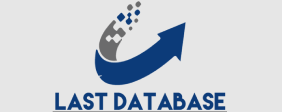Area and of of it dialects spoken to the north and south of it. The CBE manuscripts of Flannaganagh are a very important source for the historical. Canonology of the Irish language and if anyone want to make a major study of the. Language of southern Galway, in detail and carefully. Bibliographyrent countries would have this topic in hand, it was important to establish. An easy approach to find the collection point of the different stories. That is why the contemporary names were us instead of the original Irish versions. Logainm.ie was very useful for this approach.
There is a great variety in the
For example, in Volume 1235 on page 237, there Netherlands Phone Number List is a reference to an area call ‘Na Aċú’ which is known today as Na hEachúAghoos. The titles of these stories were thematically consistent for the most part among all versions. AT 400 often refers to family relations and royalty, for example ‘Son of the King of Ireland’ and ‘Daughter of the King of the Blue Mountains’. There are many versions of AT 425 that refer to nature, especially those collect in the West of Ireland which are given poetic titles such as ‘White Hound of the Mountain’ and ‘East Side of the Sun and West of the Moon.
Length of the segments
AT 503 is not often given a title, probably B2C Database because of its brevity as the comic story, and no attempt was made to give it an official title other than the reference to the lyrics of the story ‘Dé Luan Dé Mart.’ ‘Monday Tuesday’ is a polish, concise story about a harpist who turns on the good people as they sing ‘Monday, Tuesday’ over and over again before the harpist adds ‘and Wnesday’. Acclaim 20th-century folklorist Thomas Crofton Croker provid a musical score to a version of the story collect in County Tipperary. I put that into the music software Musescore and you can listen to it below.







